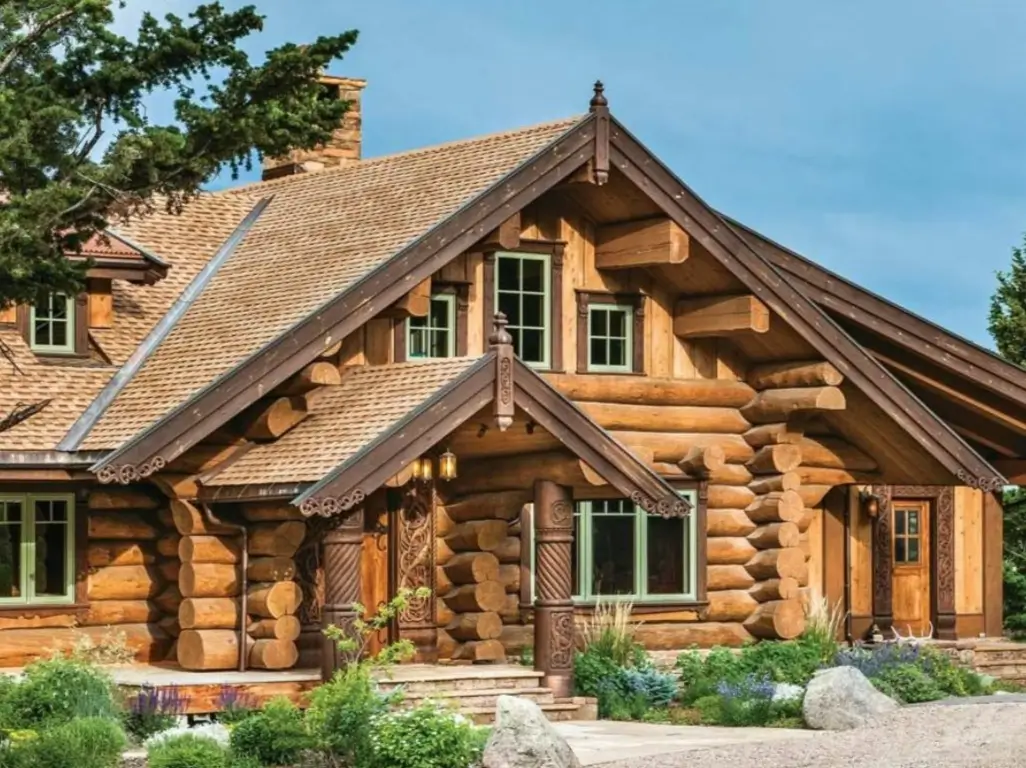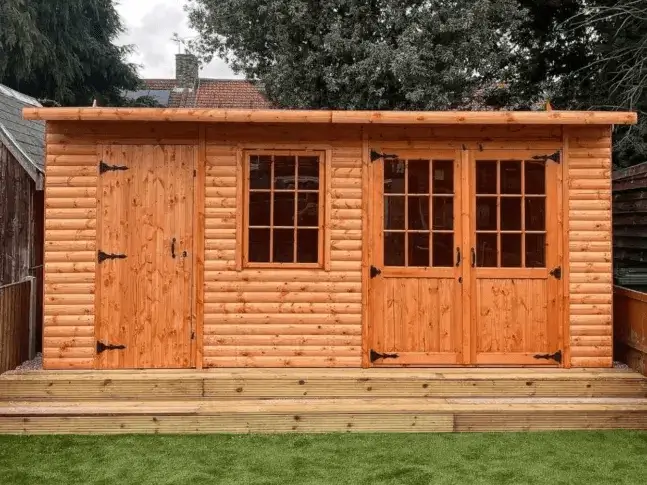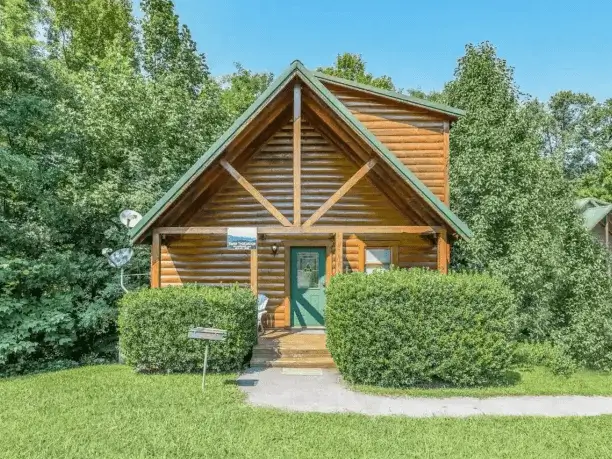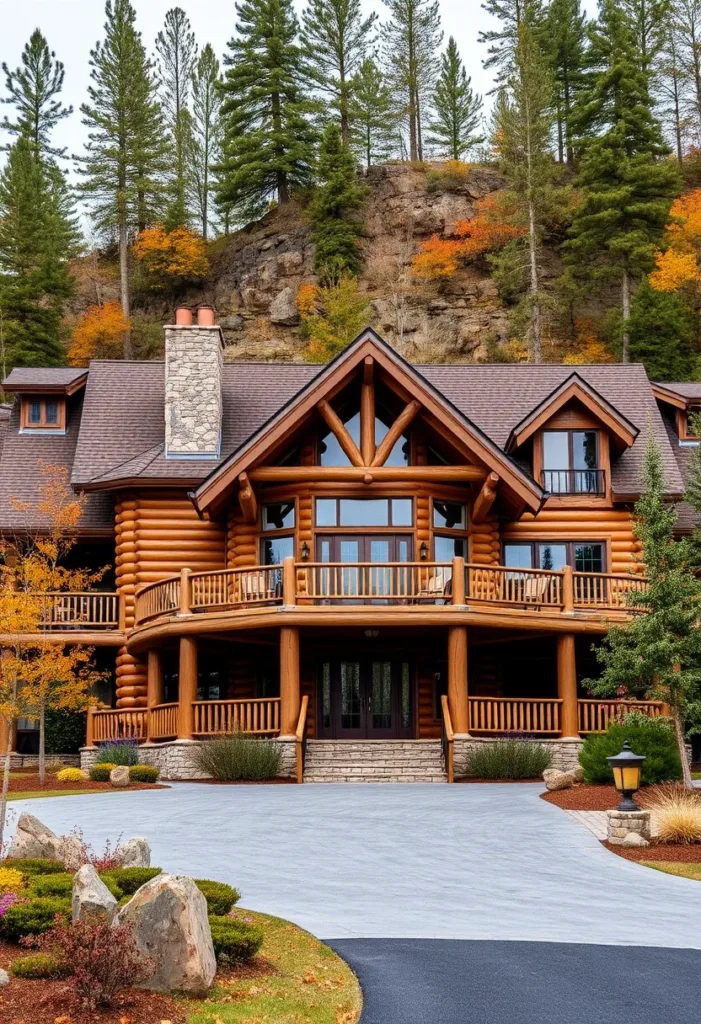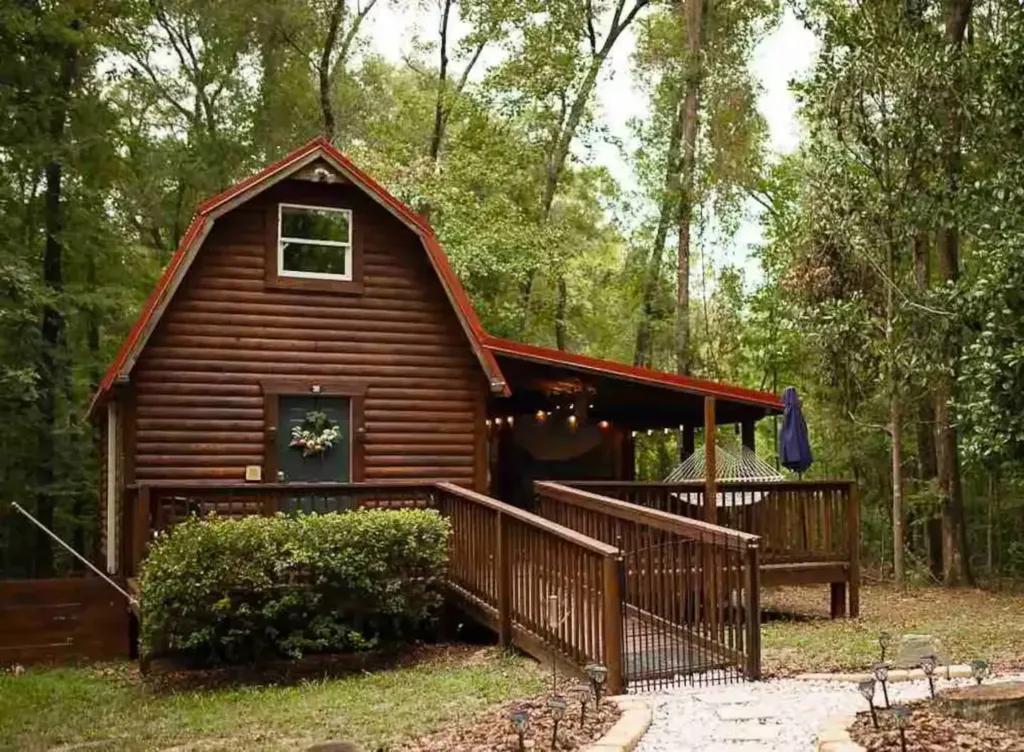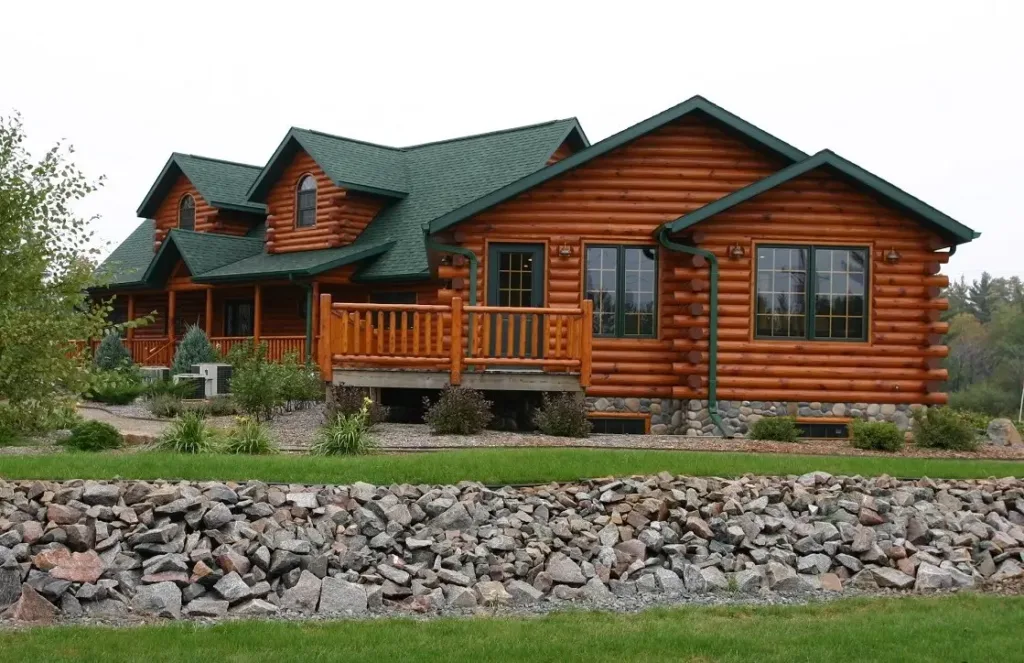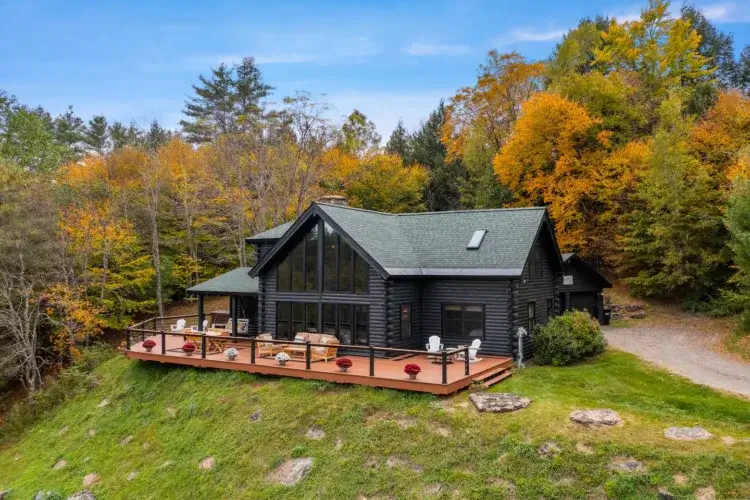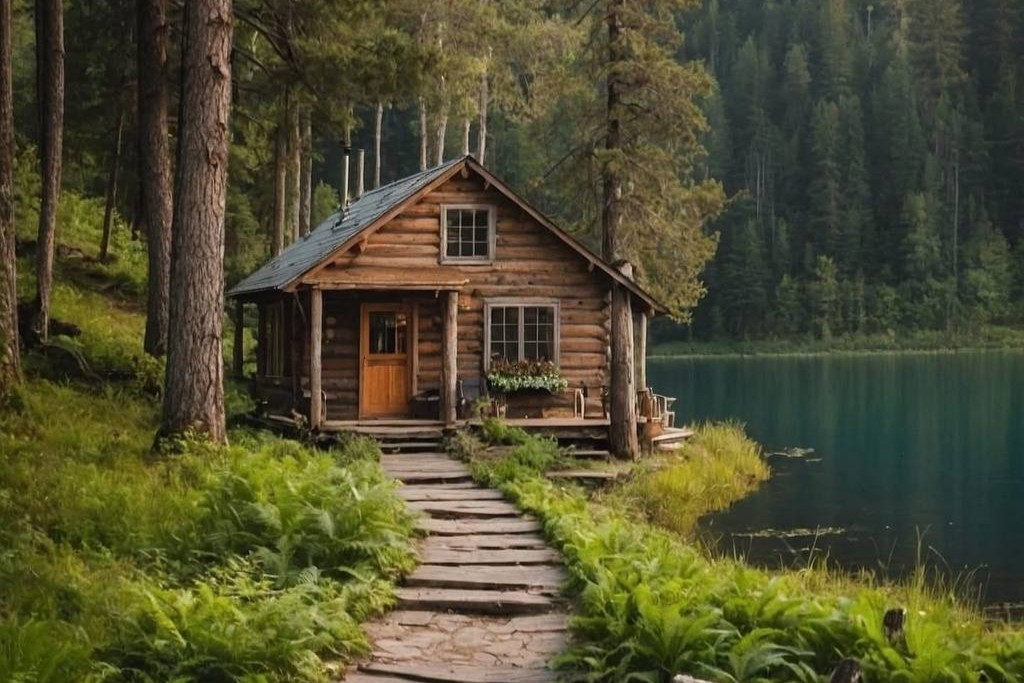Choosing the right log cabin log types is the most foundational decision you’ll make when selecting your log home materials. This single choice dictates your cabin’s visual character, structural integrity, long-term maintenance, and overall budget.
We’ve guided countless future cabin owners through this process, and we’ve designed this guide to be your trusted partner. It’s a simple, step-by-step framework for making a confident decision, exploring everything from rustic handcrafted logs to modern milled profiles. We’ll compare the most popular wood species and break down how these choices affect your budget, ensuring you select the perfect logs for a beautiful and durable home.
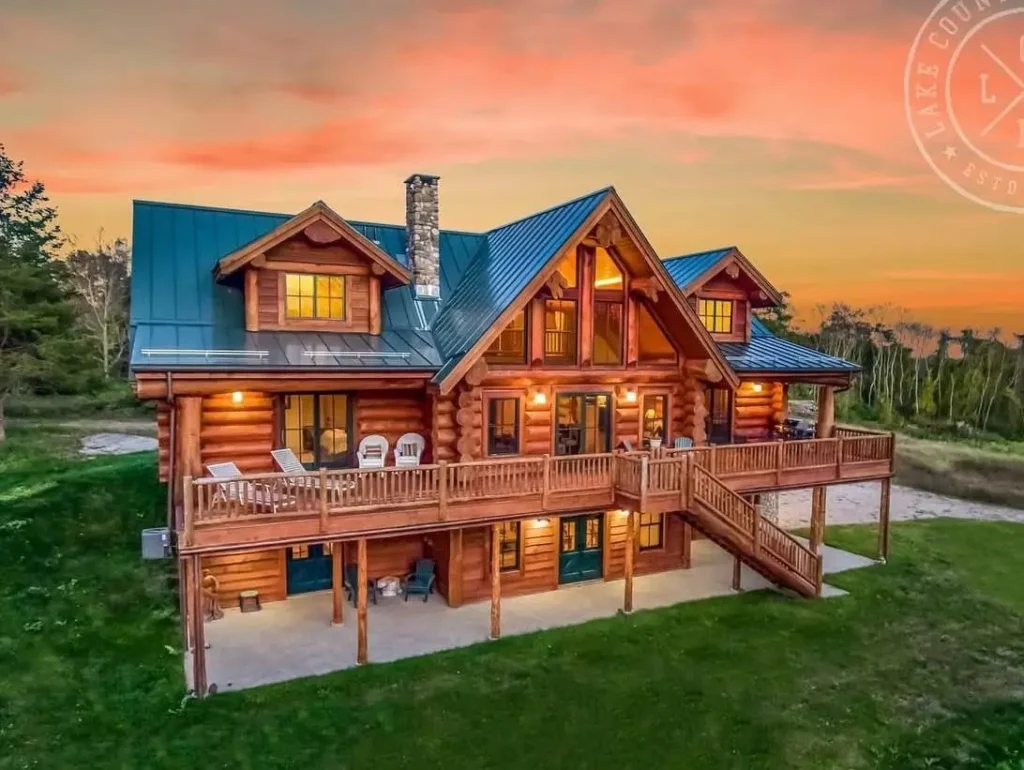
How to Choose the Right Logs for Your Cabin: A 4-Step Guide
Making the right choice is about breaking it down into four key decisions. Let’s walk through them one by one.
Step 1: Define Your Core Style — Rustic or Refined?
First, decide on the overall aesthetic you want. This choice comes down to one fundamental question: do you prefer the unique character of handcrafted logs or the clean consistency of milled logs? This is often the core of the milled vs handcrafted logs debate.
Handcrafted Logs: For Rustic, One-of-a-Kind Character
Handcrafted logs are peeled and shaped by artisans to preserve the tree’s natural taper, knots, and individual character. No two logs are the same, giving the finished cabin an authentic, robust, and organic appearance. This method of log cabin construction results in a home that feels like it grew right out of the landscape.
- Benefits: Unmatched rustic beauty, exceptional structural strength, and a truly unique home.
- Best For: A traditional, one-of-a-kind log home where natural charm is the priority. Once you’ve chosen your log style, you can start dreaming about the inside with these rustic cabin interior design ideas.
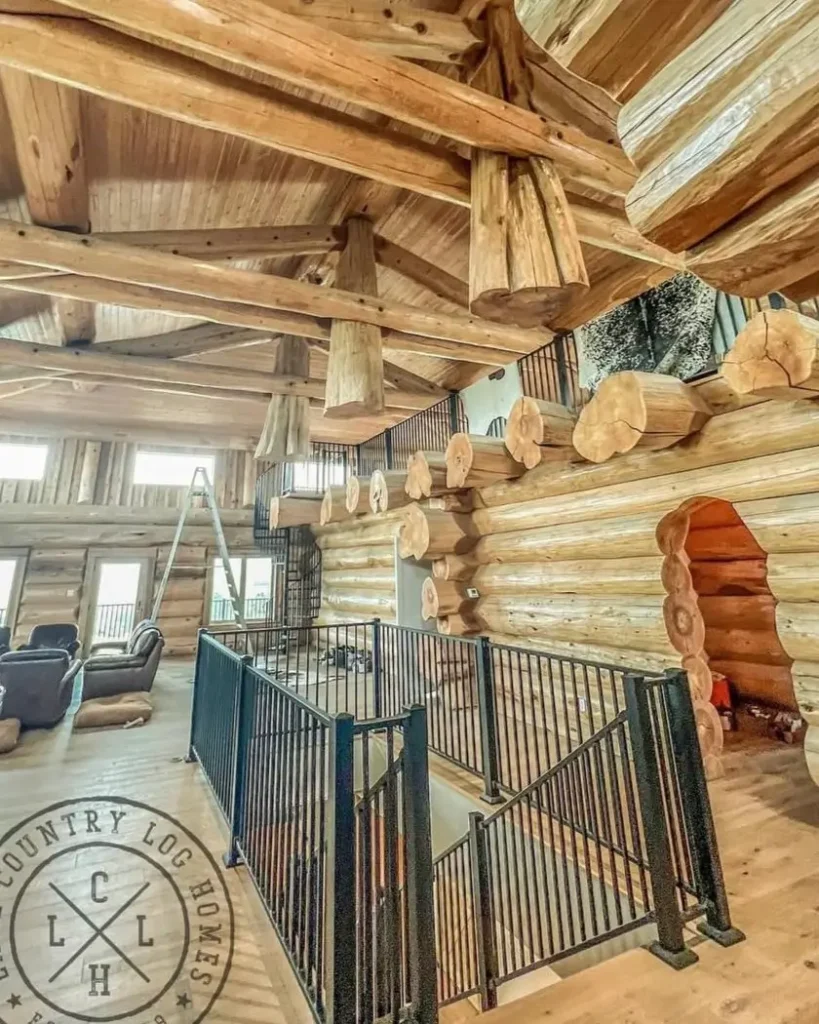
Milled Logs: For Uniformity and Precision
Milled logs are machine-profiled to a specific, uniform shape and size. This creates a consistent, predictable appearance with tight seams. This precision is ideal for builders and homeowners who prioritize predictable construction timelines and costs, often found with log cabin kits.
- Benefits: Tighter seals, often faster and less expensive construction, and a more predictable building process.
- Best For: A more modern or refined log home aesthetic with potentially lower initial labor costs.
Step 2: Understanding Log Profiles and Shapes
Your log’s profile, or shape, defines the final texture and character of your walls. These different log profiles affect not only the look but also how the logs fit together.
- D-Log: The most popular profile. The log is rounded on the exterior for a classic cabin look but is milled flat on the interior.
- Full-Round Log: Rounded on both the inside and outside, this profile provides the quintessential log cabin experience from every angle.
- Square Log: Cut flat on multiple sides and often joined with dovetail notches for a historic look.
- Swedish Cope: A milled round log with a crescent-shaped cut removed from the bottom for a tight fit.
Our Experience Tip: The D-Log profile is often the most practical choice. It gives you a classic exterior while making it much easier to hang pictures and place furniture flush against the walls inside.
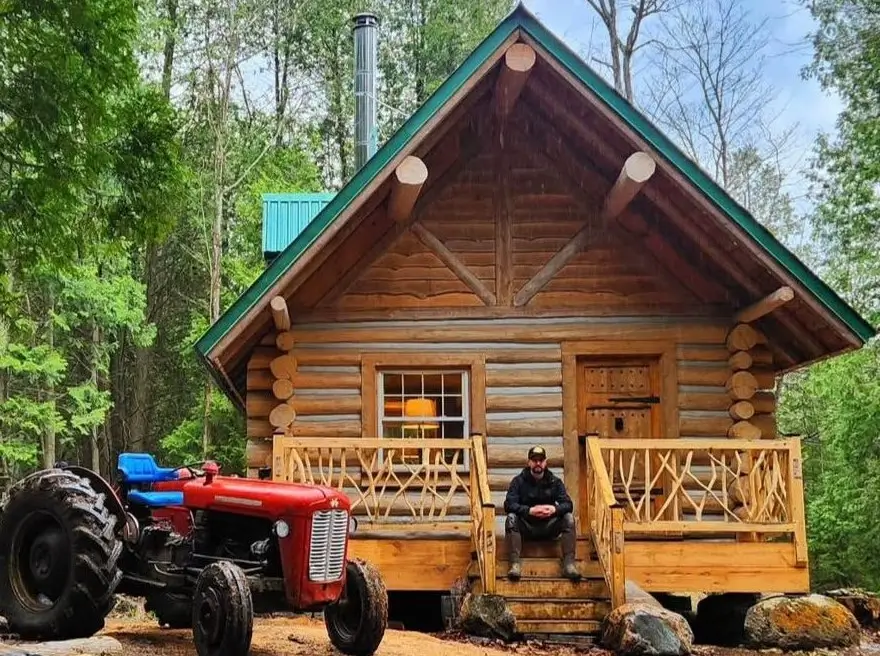
Step 3: What is the Best Wood for a Log Cabin?
Choosing the best wood for your log cabin is a balance between your local climate, your budget, and the final look you want to achieve. Based on our experience building in various conditions, here’s our breakdown of the top contenders. Popular choices like affordable pine logs are common, while premium cedar logs provide natural durability.
| Wood Species | Key Benefits | Considerations | Relative Cost |
|---|---|---|---|
| Pine | Affordable, widely available, good insulation value. | Must be properly treated to prevent rot and insects. | Low to Medium |
| Cedar | Naturally resistant to rot and insects; lightweight. | More expensive; can be softer and dent more easily. | High |
| Spruce | Strong for its weight, straight grain, machines well. | Not naturally rot-resistant; requires careful sealing. | Medium |
| Douglas Fir | Exceptionally strong and stable, resists wear. | Can be heavy and more difficult to work with. | Medium to High |
| Oak | Extremely durable, strong, and rot-resistant. | Very heavy, difficult to work with, and very expensive. | Very High |
Step 4: Essential Log Cabin Construction and Joinery
The log joinery method is critical to your cabin’s structural integrity and style, and quality construction should always follow industry building standards.
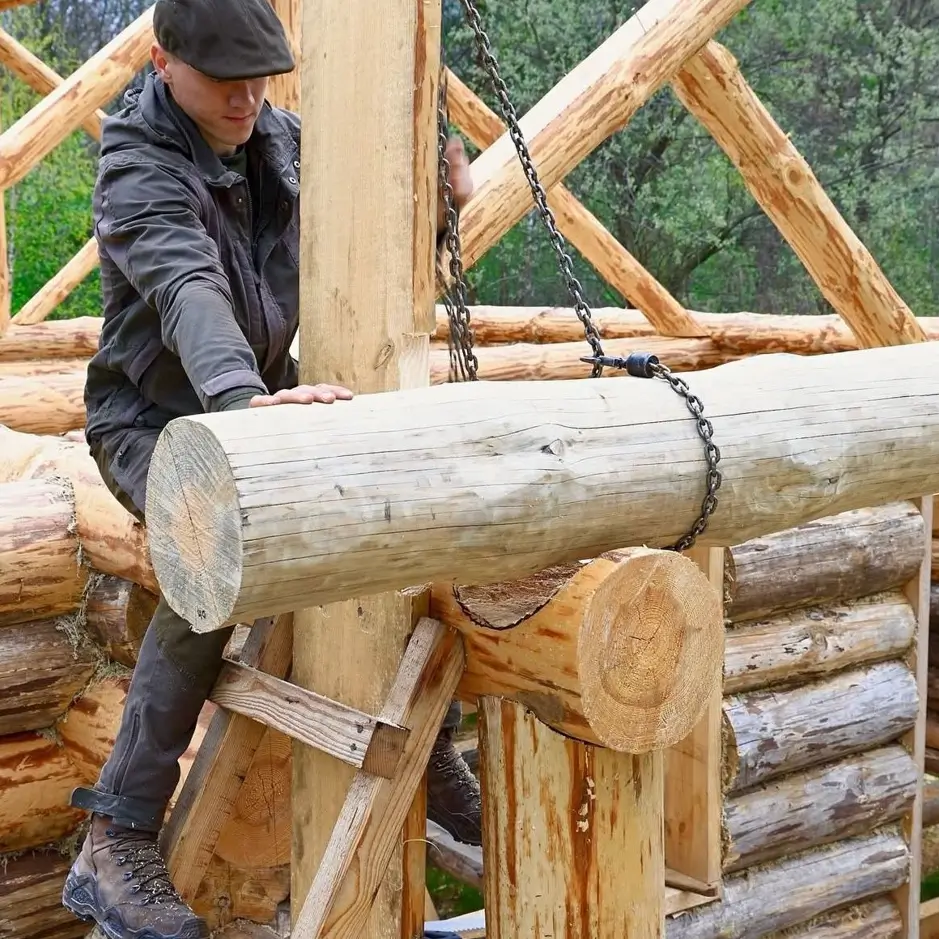
- Full Scribe / Saddle Notch: Typically used with handcrafted logs, the profile of each log is cut to fit perfectly over the one below. This method creates one of the most airtight and energy-efficient seals possible in a handcrafted home.
- Dovetail Notch: Used with square logs, this interlocking joint is known for its incredible strength and is a hallmark of Appalachian-style cabins.
- Butt and Pass: A simpler method where one log “butts” into the log that “passes” by it at the corner, common in many log kits.
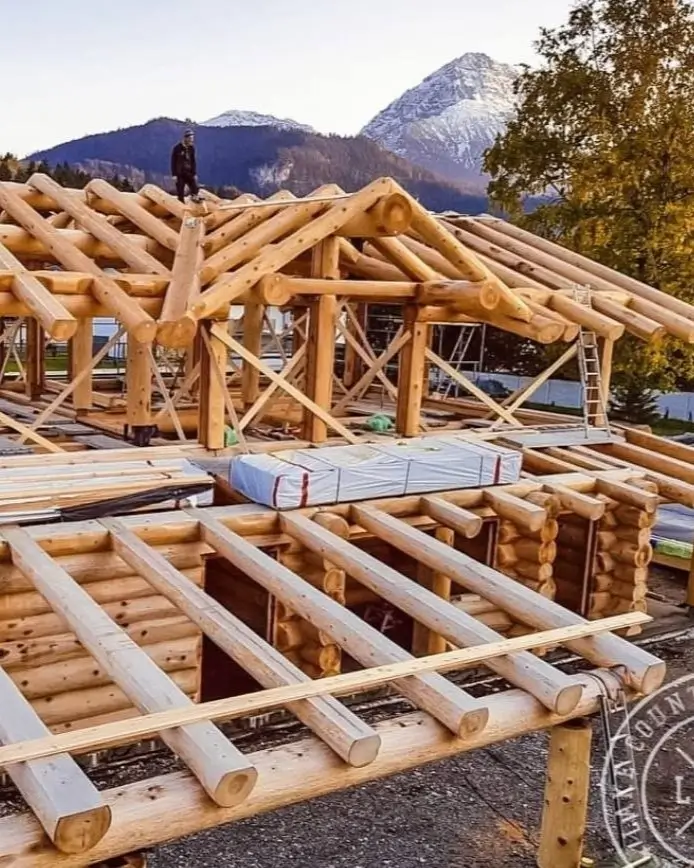
Understanding the Cost of Different Log Cabin Logs
To help you plan your investment, here are the four biggest factors that will influence the final log home cost:
- Wood Species: This is a major factor. Cedar can easily cost twice as much as Pine.
- Log Profile: Handcrafted logs require significantly more skilled labor than milled logs.
- Log Diameter: Thicker logs cost more for the material and the machinery required to lift them.
- Kits vs. Custom: A fully custom, handcrafted build will be at the highest end of the price spectrum. For those looking for a more budget-friendly or smaller-scale project, exploring small log cabin kits can be a great alternative.

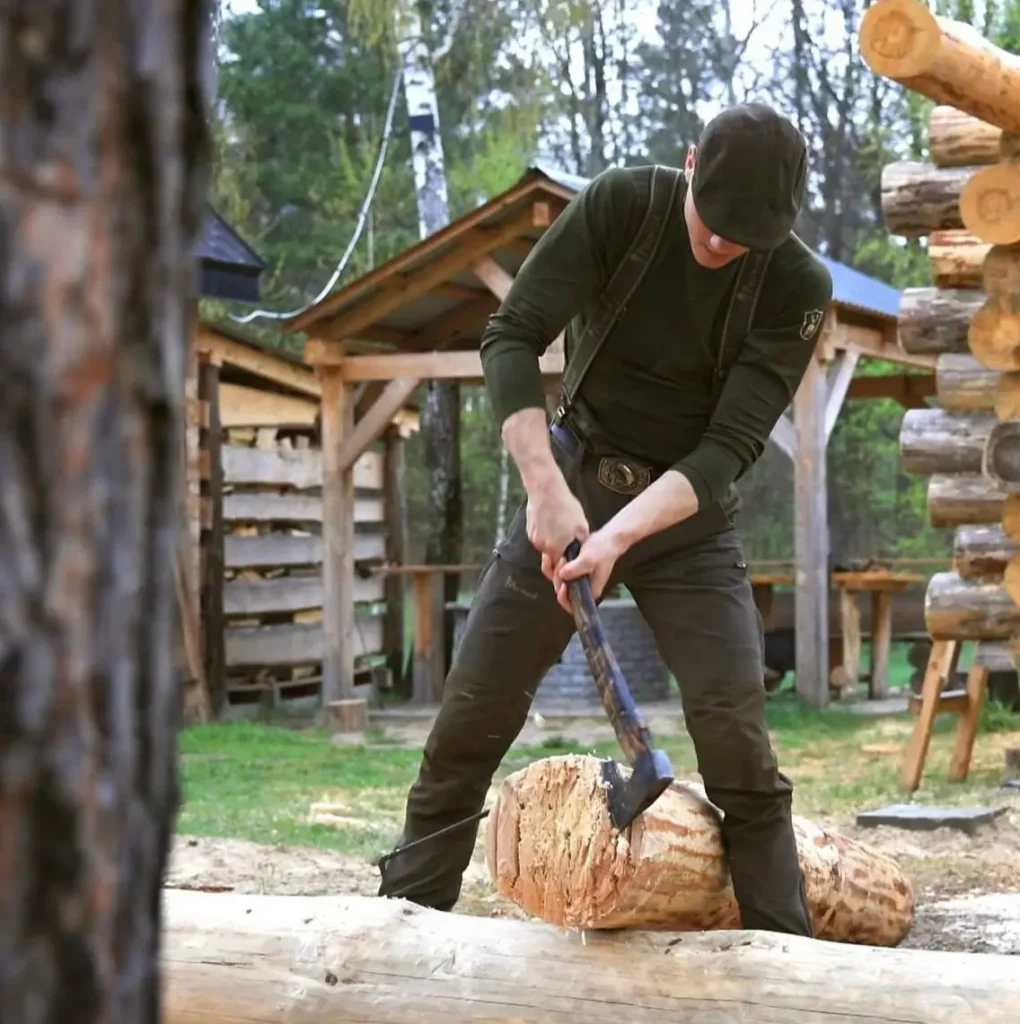
Expert Tips for Long-Term Log Cabin Maintenance
From our decades of experience, we know that proactive log home maintenance, guided by authoritative technical data on wood properties, is the secret to a home that lasts for generations. These are our non-negotiable tips for protecting your investment:
- Design with Overhangs: Generous roof overhangs (at least 2-3 feet) are a log wall’s best friend.
- Use Quality Stains and Sealants: A high-quality, breathable log home stain protects from UV damage and moisture.
- Perform Annual Inspections: Walk around your cabin once a year to inspect logs, sealant, and joints.
- Keep it Clean: Periodically wash your log walls with a gentle cleaner designed for log homes to protect the finish.
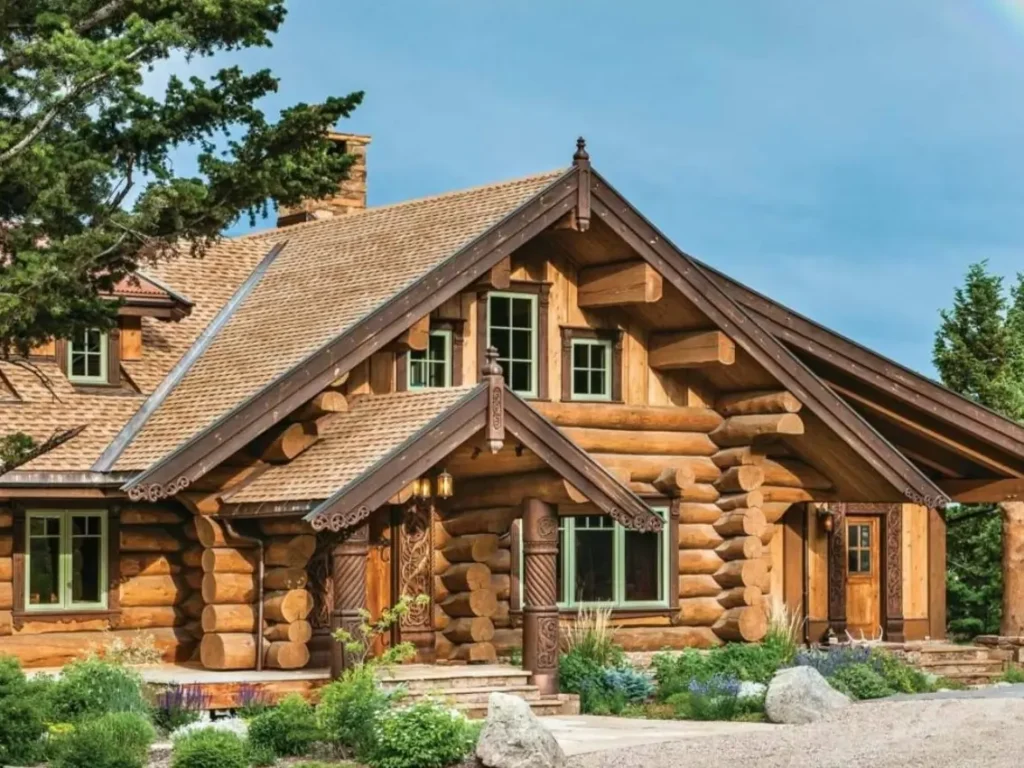
Ready for more inspiration? See how these different log types come to life in these incredible bar log cabin ideas.
FAQs About Log Cabin Log Types
1. What is the most durable wood for a log cabin?
The most durable woods are typically Cedar and Oak. Cedar is naturally resistant to rot and insects, making it a low-maintenance choice. Oak is incredibly hard and rot-resistant but is also heavier and more expensive. With proper maintenance, however, woods like Pine and Douglas Fir can also last for many generations.
2. How much do log cabin logs cost?
There’s no single price, as costs vary dramatically based on wood, style, and your location. As a rough estimate, a basic pine log package might range from $30-$50 per square foot of living space, while a premium handcrafted cedar package could be well over $100 per square foot for the logs alone.
Always get a detailed quote from your builder, as these figures are for initial planning only.
3. How often does a log cabin need to be re-stained?
This depends heavily on your climate and sun exposure. Generally, expect to re-stain every 3 to 7 years. Walls that get the most direct sun and weather will need attention more frequently.
4. What is the difference between milled and handcrafted logs?
Milled logs are cut by a machine to be uniform in size and shape, resulting in a consistent look and a tighter fit, often used in kits. Handcrafted logs are shaped by hand, preserving the natural taper and character of each individual tree for a unique, rustic appearance.
5. Can I build a smaller log cabin in my backyard?
Absolutely. For smaller projects like a home office or guest suite, shed log cabins offer a fantastic and scalable solution. They often use similar log types but are designed for simpler, backyard construction.
Last Updated: June 19, 2025 3:15 AM
About the Author
Jonas Armin Tan is a seasoned writer and photographer for Cabinidea, specializing in home improvement, smart home technology, and the intersection of design and outdoor living. With a BFA in Photography and a lifetime of experience in outdoor recreation, he brings a unique blend of artistic vision and practical insight to his work. When not creating compelling content, Jonas leads marketing strategy as a Marketing Manager at SAP.

